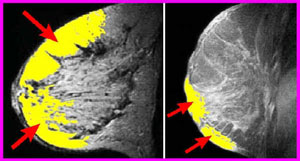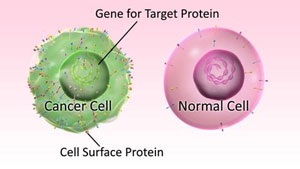
The Susan G. Komen for the Cure, a respected organization that significantly contributes to finding a cure for breast cancer states, “Race is not considered a factor that might increase a woman’s chance of getting breast cancer.”
Why then do white women receive a diagnosis of breast cancer more frequently than any other group of women after age 45? Why do African-American women experience a higher incidence rate before age 45, as well as more likely to die from breast cancer at every age than women from any other racial or ethnic demographic? American Indian/Alaska Native, Asian/Pacific Islander, and Hispanic/Latina women residing in the U.S., show significantly lower incidents and deaths from the disease than either African-American or white women of any age.
Why do these disparities exist? One factor might include that tumors in younger women are more aggressive and harder to treat. Another factor could be the socioeconomic conditions that inhibit early detection and treatment.
The American Cancer Society reveals that women who have less than a high school education, no health insurance coverage, or who are recent immigrants to the US are the least likely to have had a recent mammogram. Low-income women are also less likely to have had a mammogram within the past two years than women at or above the poverty level.
Statistics clearly show that older females who enjoy a diet high in fat and low in vegetables are at greater risk of a breast cancer diagnoses than men, a younger person, or a vegetarian. Awareness of the risk factors associated with this disease can help lower breast cancer rates for women of all ages, races, and ethnicities.
According to Web MD, additional risk factors include a family history of breast cancer, previous incident of breast cancer one breast, having a first child after age 35, or not bearing children at all. Other risks include having a period before age 12 or reaching menopause after 55, being overweight, especially with abundant belly fat. Other factors include having extremely dense breasts, being a carrier of the BRCA 1 or 2 gene passed from parents to children, long-term use of hormone replacement therapy, chest radiation, and drinking alcohol more than twice daily.
Although some of these factors are outside a person’s control: others like lifestyle choices will enhance the likelihood of remaining cancer free, or provide better odds of catching the disease early when the cure rate is high.
 However, the bad news is that excluding skin cancer, breast cancer is the most common cancer among women in the U.S, accounting for nearly one in four cancer diagnoses. Breast cancer is second only to lung cancer as a leading cause of death in women, and over the past two decades the number of breast cancer cases diagnosed has risen.
However, the bad news is that excluding skin cancer, breast cancer is the most common cancer among women in the U.S, accounting for nearly one in four cancer diagnoses. Breast cancer is second only to lung cancer as a leading cause of death in women, and over the past two decades the number of breast cancer cases diagnosed has risen.
The good news however, is very good because the death rate from breast cancer has dropped dramatically over the last two decades due to improved early detection methods that reveal the cancer when it is most treatable, and a drop in the number of women on hormone replacement therapy. Additionally, a number of treatment breakthroughs have boosted the odds of surviving this deadly disease.
Parade Magazine cites five reasons why breast cancer researchers are excited about the possibilities for beating breast cancer. Doctors now use Magnetic resonance imaging (MRI) scans to diagnose breast cancer sooner in high-risk women. The MRI looks at blood vessels because the blood supply to malignant cells differs from the supply delivered to healthy cells, which causes the cancer to appear as bright spots on the digital image.
A new class of drugs known as aromatase inhibitors (AIs), block the breast’s ability to convert other hormones into estrogen. These drugs starve the tumors of the estrogen that fuels them. Those who took the drug following treatment with tamoxifen saw a 32 percent lower risk of recurrence of a new breast cancer, or death then those took the original drug.
In recent clinical trials at the Baylor College of Medicine, at least one medication shows promise in killing stem cells associated with cancerous tumors. Earlier chemotherapy drugs killed surrounding cells, but not the stem cells that can morph into new cancers. Researchers at Baylor and Harvard are currently investigating another drug, originally developed for Alzheimer’s disease, for its effectiveness in destroying the stem cells in breast cancer tumors.
Improved biopsy methods now allow doctors to sample one to three lymph nodes taken from the patient’s armpit to determine if there is a spread in the cancer, rather than the old method of taking all the nodes. This smaller sampling lessens the patient’s risk of pain, healing time, and scarring.
 A new type of genomic profiling has also led to the creation of super-effective drugs that target a specific aggressive type of tumor that makes up about 15 percent to 30 percent of all breast-cancer cases, like those often found in young African-American women. It is no longer simply about getting a genetic test to confirm whether, or not the patient carries an inherited breast cancer gene. Scientists now examine the genetic information of the cancer cells to help determine the best treatment options. One such test is already widely used with women whose cancer has not spread to lymph nodes.
A new type of genomic profiling has also led to the creation of super-effective drugs that target a specific aggressive type of tumor that makes up about 15 percent to 30 percent of all breast-cancer cases, like those often found in young African-American women. It is no longer simply about getting a genetic test to confirm whether, or not the patient carries an inherited breast cancer gene. Scientists now examine the genetic information of the cancer cells to help determine the best treatment options. One such test is already widely used with women whose cancer has not spread to lymph nodes.
Although most women know of the risks of breast cancer, not all understand the symptoms and may wait to seek treatment until they experience pain or the symptoms interfere with daily tasks. Don’t wait. Begin self-breast exams at age 20, and for women in the higher risk categories, talk to the doctor about the best age to begin having mammograms and how often. A change of eating habits and lifestyle choices can lower the risk of developing the disease. Investing a little effort into understanding the dietary, lifestyle, racial, and ethnic risks of preventing breast cancer, will save lives.

Comments
Lifestyle choices
Many articles on breast cancer fail to mention the following:
According to many peer reviewed medical studies sleeping in a room that has ambient light (night lights, TV's, computers, street lights shining in the window) may increase a woman's chances of developing hormone dependent breast cancer by 21-40%! Women working the night shift and trying to sleep during the day without adequate room darkening shades can increase their chances of contracting, not only breast cancer, but also diabetes!
The connection is melatonin production and hormone sensitivity!
Many of us do not have a choice of working hours but we can, at least, make sure our sleeping rooms are totally dark! If nothing else use tin foil to cover the windows and turn of the TV!
Since they are merely peer
Since they are merely peer reviewed it does not mean that it is accurate it mostly means that it is from a student and if your doctor how would they know simply from information that they read online? I can tell you one thing a person does not get breast cancer from night lights, TV's, computers, street lights shinning in the window or working late nights or sleeping during the day. Breast cancer is simply genetic and skips every other generations. Breast cancer is a malignant tumor that starts in the cells of the breast. A malignant tumor is a group of cancer cells that can grow into (invade) surrounding tissues or spread (metastasize) to distant areas of the body. Doctors still do not know till this day what causes breast cancer in the first place, but there are many risk that can help lead to it but know exactly.